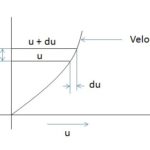Introduction and Significance of Dimensionless Numbers
The Analytical and Numerical Analysis in Engineering is difficult to understand with the help of the normal quantities. They don’t interpret any result and can only be used as an Input and Output to a System. The Processing and clear understanding of the system and its behavior is done with dimensionless quantities. In this article, we will be learning about Reynolds number, its Origin, Significance, and Application in Engineering.
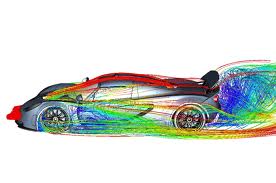
Definition of Reynolds Number
Reynolds number is a dimensionless quantity used to predict fluid flow behavior and plays an important role in the observation of fluid in motion. The flow characteristics (Laminar and turbulent) are indicated by Reynolds number. The Formula for calculation of Reynolds number for any fluid flow is as follows:
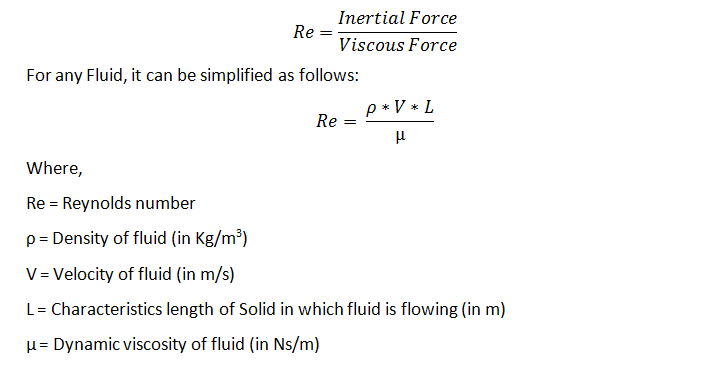
Also Read:
- What are Different Types of Turbine?
- Properties of Fluids in Fluid Mechanics
- Types of Fluids In Fluid Mechanics
History and Origin of Reynolds Number
The theory of dimensionless Quantities was first discovered by Stokes while working with drag on a sphere. In 1883, a Scientist named Osborne Reynolds conducted an experiment on dye immersed in water. The investigation was aimed to find out the relationship between velocity and behavior of the fluid flow. After several experiments, he found out the fluid flow pattern and characterized them as laminar and turbulent based on velocity, density, and flow viscosity. The Dimensionless Quantity, which gives the relationship of velocity and fluid flow behavior, was named Reynolds number.

Expt. Setup by Osborne Reynolds
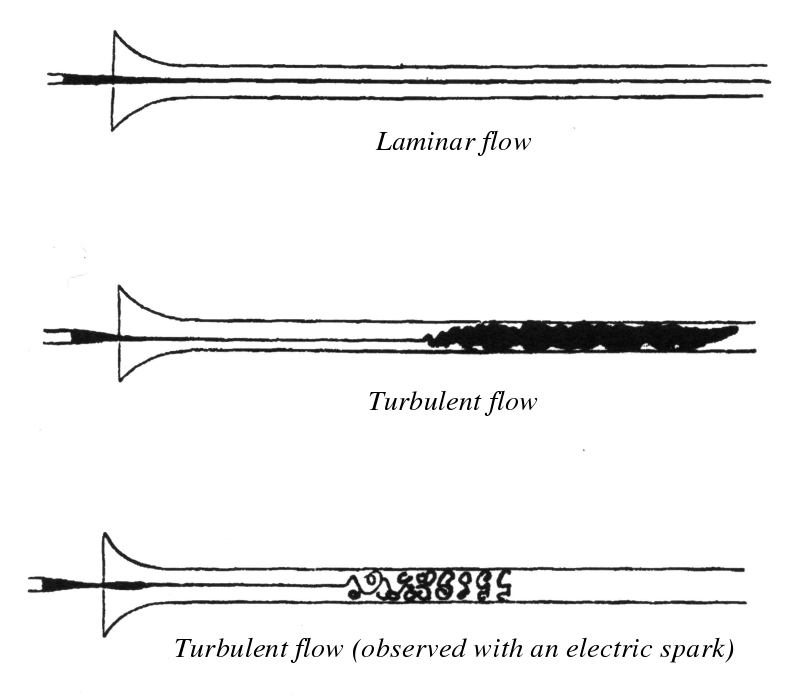
Visualization of fluid flow behaviour
Significance of Reynolds Number to Fluid flow
The Origin of the Reynolds number was to predict the nature of the fluid flow. The value obtained by calculating the fluid flow parameter indicates its behavior. To understand the significance of the Reynolds number, we need to understand external and internal flow.
External Flow: When the Fluid flow is not Bounded by the Solid, It is called External Flow. The Example Includes Flow over a vehicle, Flow over a Building, Etc.
 Fig. : Example of External Flow
Fig. : Example of External Flow
Internal Flow: When the fluid flow is bound by the solid, it is called internal flow. The example includes flow inside a pipe, flow inside the car’s battery, etc.
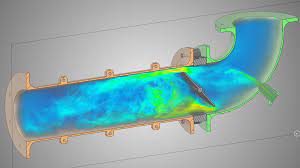
Fig. : Example of Internal Flow
The Reynolds is calculated differentially for both types of Flow. Based on the calculated value, we can predict the type of Flow. To give you a better understanding of Reynolds number, refer to the following Table:
For Internal Flow,
| 0<=Re<=2000 | Laminar Flow |
| 2000<Re<=4000 | The transition from Laminar to turbulent |
| 4000<Re | Turbulent Flow |
For External Flow,
| 0<=Re<=100000 | Laminar Flow |
| 100000<Re<=500000 | The transition from Laminar to turbulent |
| 500000<Re | Turbulent Flow |
The Major Advantage of the Reynolds number is that it is much easier to calculate for every flow and easier to visualize the fluid flow.
Application
Reynolds number is used to predict flow and develop numerical strategies or experimental strategies to observe the flow’s behavior. We take the velocity, Pressure, and Dimension of fluid flow as Input. We then Calculate the Reynolds number to develop the strategies for solving the problem. A slight mistake in developing the strategies will take us away from the true solution.
For Example, Consider the flow over a vehicle at a given velocity. The Reynolds number will determine whether we will consider the Eddies of flow (for turbulent) or not. If we don’t Predict it correctly, we will get the wrong result, and the vehicle will not run properly (demand a lot of Fuel requirement). Hence, Reynolds number is accepted as a Substantial pre-requisite for all fluid flow analysis.
FAQs
Q.1. Which type of Fluid Flow is considered in the transition regime?
Answer- It depends upon the Situation and on your Computer Condition. If you have a value near to turbulent in transition regime and have an excellent Computer for Simulation, go for turbulent. If not, then go for Laminar.
Q.2. How to determine the Characteristics length of any Solid?
Answer- The Characteristics length of any Solid is defined experimentally, and there is no formula to predict it. We need to remember the characteristics length of Some solids. E.g., Flow in Pipe has characteristics length equal to the radius of the Pipe, Etc.
Q.3. What is Inertial and viscous force?
Answer- Inertial force is the force that tends the body to stay in the state of rest and motion. Viscous force is the resistive force that is caused due to viscosity.
References:
- https://news.cision.com/ansys-sweden-ab/i/discovery-live-internal-flow-valve-a,c2215773/
- https://en.wikipedia.org/wiki/Reynolds_number#:~:text=The%20Reynolds%20number%20is%20the,the%20interior%20of%20a%20pipe.






